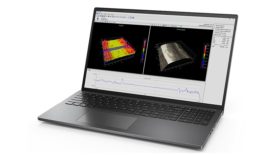Home » Keywords: » Industry 4.0
Items Tagged with 'Industry 4.0'
ARTICLES
Management
The value of Industry or Technology 4.0 comes when it supports organizational goals, aligns with the strategic plan, and enables employees to improve how work gets done.
Read More
Management
Basic Concepts to Applying Quality 4.0
Although the definitions of Quality 4.0 continue to evolve, there are a couple of basic concepts that remain constant: leadership and people.
September 18, 2024
Industry 4.0
Setting Up Data Capture and Digitalization with IO-Link
As industries increasingly adopt the principles of Industry 4.0, the need for reliable, real-time communication between sensors, actuators, and control systems becomes crucial.
September 6, 2024
Measurement
Integrated Metrology: The Next Frontier in Manufacturing
Imagine a manufacturing cell where robots and machines work in concert, assembling complex products with precision.
September 4, 2024
Management
The Evolving Role of Quality Professionals in the Quality 4.0 Era: Merging Human Expertise with Technological Advancements
Machines can accomplish so much of what humans used to do. Now is the time to leverage technology while capitalizing on the unique qualities humans bring.
July 5, 2024
ASME Column
Success in Industry 4.0 Requires a Fresh Approach to Learning
These days, engineers must be lifelong learners.
May 28, 2024
Vision & Sensors | Automation
What is Trustworthy AI for Quality Control?
Quality control in manufacturing relies on automation – and people.
April 30, 2024
Measurement
Embracing Quality 4.0: Precision Gaging Transforms Manufacturing with Data-Driven Precision
Quality engineers are uniquely positioned to leverage this data because they have been analyzing and interpreting manufacturing data for decades.
January 29, 2024
Software
Software helps see inside a lights out process
Remote oversight supports processes that cannot by nature be closed loop controlled.
December 31, 2023
EVENTS
Stay in the know with Quality’s comprehensive coverage of
the manufacturing and metrology industries.
eNewsletter | Website | eMagazine
JOIN TODAY!Copyright ©2024. All Rights Reserved BNP Media.
Design, CMS, Hosting & Web Development :: ePublishing











